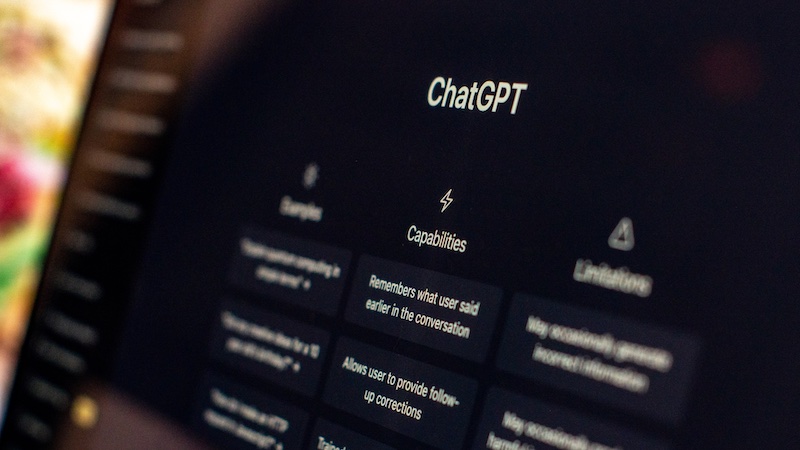This is how start-ups can use ChatGPT for themselves
ChatGPT can be an excellent tool for startups. However, many founders do not know how to use artificial intelligence sensibly. In this post, I would like to use an example to show how start-ups can use ChatGPT for themselves.
Founders have many questions when they start a new business idea. Finding the answers is not always easy. From many conversations with founders, however, I know many questions that artificial intelligence like ChatGPT could help to answer. The AI may not provide the definitive answers to a question, but at least very good inspiration that can then be used to continue working.
Contents
ChatGPT in start-ups: A warning in advance
Before I show how ChatGPT can help start-ups by asking appropriate questions, I have to point out that the answers ChatGPT generates are not perfect.
In particular, users should always remember that ChatGPT likes to make things up and then present them as facts. Because of this, one should always be cautious about definitive answers, references, or expertise. Appropriate answers should always be checked.
5 steps in which startups can use ChatGPT
Apart from that, ChatGPT is an almost inexhaustible source of inspiration, limited only by the possibility of entering appropriate entries, so-called “prompts”, into the input mask.
If you now want to use ChatGPT sensibly for your start-up, you should essentially proceed as follows:
Step 1: The concrete topic
At the beginning there is the consideration of which topic you want answers to. In our case, these are topics that are relevant for start-ups and we want to be a little more specific. The aim is to get help in creating a pitch for investors.
Step 2: A specific question
Once the (concrete) topic has been found, it is time to formulate specific questions. Fortunately, word choice and sentence structure do not play a decisive role at this point, since ChatGPT tries to capture the meaning of a sentence and also corrects spelling mistakes. As a founder, for example, you could have a question: “Hey ChatGPT, create a Pich for me [hier bewusst falsch geschrieben]with which I can present my start-up to investors”.
Step 3: The context
However, we must not stop at this last point. Because if we only asked this question to ChatGPT, the answer would be completely arbitrary. Why? Because we didn’t provide any context. However, the context ensures that ChatGPT delivers answers that are useful for our purposes.
Creativity is required at this point and we have to think in different directions. On the one hand, we have to think about why we want to present our company to investors. Do we want money, do we just want to show that the company exists, or do we need investor support in certain areas?
We need to tell ChatGPT that as context. But that is not all. Because we also need to provide ChatGPT with information that the AI can work with. I’m talking about the background information that ChatGPT can use to tailor its response to our needs.
For example, we should describe what our company does at all, whether and which products or services already exist, how the team is structured, whether and how much turnover and profit has already been made, what the competition looks like, what challenges the founders face see for yourself whether there is a USP and what the next steps are for the company.
Step 4: The finishing touches
When we have written all this down, the icing comes, so to speak. Perhaps the moment we turn to ChatGPT we are not particularly creative. Then we can let ChatGPT help us at this point by instructing ChatGPT to ask the appropriate questions so that ChatGPT can give us the appropriate answers to our original question.
So we can ask very specifically: “Hey ChatGPT, what questions do I need to answer so that you can help me formulate a pitch for investors for my start-up? ChatGPT then asks appropriate questions that the user can answer. From these answers, ChatGPT then generates the corresponding answers.
Step 5: A Few Specifics
Are there any special features to consider when it comes to so-called “prompt engineering”, i.e. the creation of entries? For example, you could tell ChatGPT against which background the answers should be created. For example, you could instruct ChatGPT to provide the answers “as a startup funding expert.”
But you could also say that the answers should sound “like a pirate” or “like Elon Musk”. And one could even say that the answers should be formulated in rhyme, as a song or as a poem. And of course you can ask ChatGPT for examples to make certain aspects clearer and you can even get verbatim text for your pitch.
Startups and ChatGPT: The emphasis is on context
It is important that the context is given in as specific and detailed a manner as possible. The better the context, the better ChatGPT’s responses. In addition, it should be noted that sometimes it is necessary to spin several “loops” to get exact answers, that is, sometimes you have to take parts of the answers formulated by ChatGPT and instruct ChatGPT to concretize this part, to add certain aspects or omit content. After all, you can have this answer regenerated for every question you don’t like the answer to.
Seven inspirations for the next steps
I can only recommend every founder to deal with ChatGPT. The inspirations you can get from the AI can often save you hours of research. Here are a few ideas for topics ChatGPT can help with:
- What are possible problems, challenges and solutions for this business idea: [Beschreibung der Geschäftsidee und ihres detaillierten Hintergrundes].
- Develop recommendations for action in the area (marketing, sales, communication, customer approach, executives, etc.) for a start-up, assuming that the business idea looks like this: [Beschreibung der Geschäftsidee].
- Create a step-by-step marketing plan for a startup with this business idea: [Beschreibung der Geschäftsidee].
- Create a pitch for investors with the goal of getting funding for a certain amount with this business idea, this value proposition and these target customers: [Beschreibung der Geschäftsidee, des Nutzenversprechens und der Zielkunden sowie des gewünschten Betrags in Euro].
- Create a role and knowledge description for new employees based on the existing team with these skills and experiences: [Beschreibung der Teammitglieder, ihrer Fähigkeiten, Erfahrungen und Ausbildung].
- Create relevant questions for creating a business model canvas based on the following background information: [Beschreibung der Hintergrundinformationen, z.B. Geschäftsidee, potenzielle Kunden, Teammitglieder, USP, innovative Produkte oder Dienstleistungen, Wettbewerb].
- Create questions for creating a SWAT analysis based on the following background information: [Beschreibung der Hintergrundinformationen, z.B. Geschäftsidee, potenzielle Kunden, Teammitglieder, USP, innovative Produkte oder Dienstleistungen, Wettbewerb].
Also interesting:



